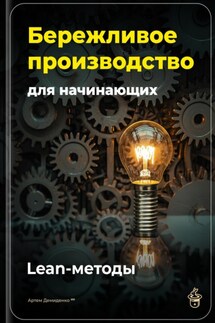English for Small Business Management - страница 6
One of the most difficult decisions is determining the future ownership of the business. If there are several children, for example, should they all receive equal shares? On the surface, this seems to be the fairest approach. However, such an arrangement may play havoc with the future functioning of the business. Suppose that each of five children receives a 20 percent ownership share even though only one of them is active in the business. The child active in the business – the leadership successor – becomes a minority stockholder completely at the mercy of relatives on the outside.
Ideally, the founder has been able to arrange his or her personal holdings to create wealth outside the business as well as within it. In this way, he or she may bequeath comparable shares to all heirs while allowing business control to remain with the child or children active in the business.
Tax considerations are relevant, of course, and they tend to favor gradual transfer of ownership to all heirs. As noted above, however, transfer of equal ownership shares to all heirs may be inconsistent with future efficient operation of the business. Tax laws should not be allowed to blind one to possible adverse effects on management.
One creative ownership transfer plan was worked out by a warehouse distributor in the tire industry. The distributor's son and probable successor was active in the business. The distributor's daughter was married to a college professor at a small southern university. Believing the business to be their most valuable asset, the owner and his wife were concerned that both the daughter and the son receive a fair share. Initially, the parents decided to give the business real estate to their daughter and the business itself to their son, who would then pay rent to his sister. After discussing the matter with both children, however, they developed a better plan whereby both the business property and the business would go to the son.
The daughter would receive all nonbusiness assets plus an instrument of debt from her brother, intended to balance the monetary values. This plan was not only fair but also workable in terms of the operation and management of the firm.
Planning and discussing the transfer of ownership is not easy, but such action is recommended. Over a period of time, the owner must reflect seriously on family talents and interests as they relate to the future of the firm. The plan for transfer of ownership can then be firmed up and modified as necessary when it is discussed with the children or other potential heirs.
1.4.2 Exercise 2. Remember the following phraseological units
1.4.3 Exercise 3. Arrange the following words into 2 columns: synonyms and antonyms
Intensive, full-time, secondary, day-time, include, primary, evening, exclude, part-time, extensive
1.4.4 Exercise 4. Complete the following chart:
1.4.5 Exercise 5. Remember the difference in the meaning of the following words:
1.4.6 Exercise 6. Remember the following terms:
Distribution, production, profitability, customer, delivery, income, benefit, salary, dividend, consumer, subordinate, employee.
1.4.7 Exercise 7. Add prefixes in-, un-, mis-, il-, ir-, dis- to the following words
Sufficient, possible, responsible, satisfactory, advantage, formally, dependent, certainty, competent, consistent.








